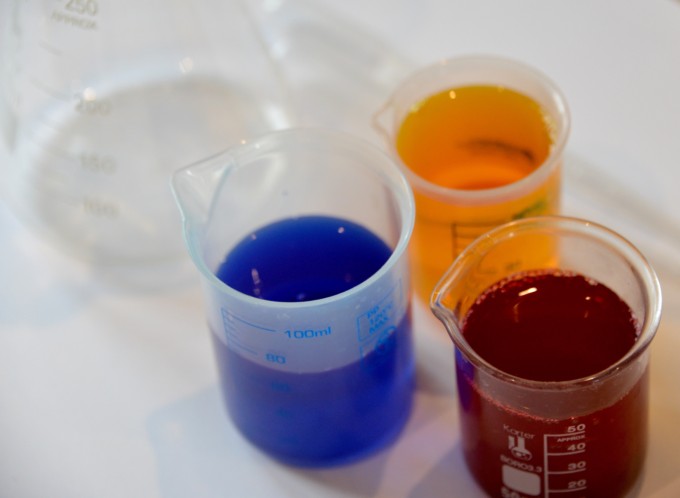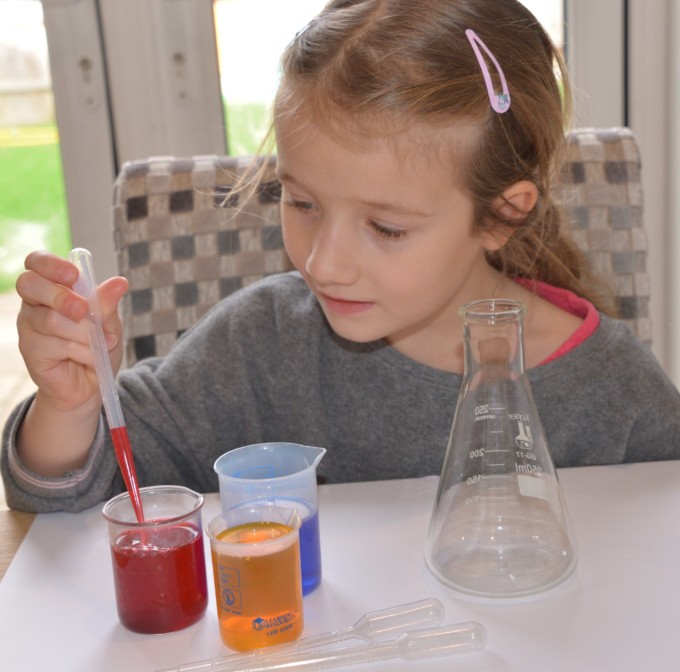Colour mixing is a great activity for learning about primary and secondary colours as well as fantastic fine motor control practice if children use a dropper or pipette. Once children have made secondary colours they could then experiment by mixing primary and secondary colours to make tertiary colours or try to make as many different shades of one colour as they can.
Materials
Plastic plates
Water
Food colouring
Instructions
Add a small amount of red, yellow and blue food colouring to separate beakers and then top up with a little water.
Use the pipettes or droppers to drop different colours of water onto a plastic plate and record which new colours are created.
What is a primary colour?
Primary colours cannot be created by mixing other colours together. These are:
Red, Yellow and Blue
What is a secondary colour?
Secondary colours are made by mixing primary colours.
Yellow + Blue = Green
Red + Yellow = Orange
Blue + Red = Purple
What is a tertiary colour?
Tertiary colours are made by mixing a primary colour with a secondary colour.
Questions to ask about primary colours
What do you think would happen if you used a paper plate instead of a plastic plate?
Do you think the colours would still mix if you used filter paper or kitchen roll?
Which colours do you think are warm and which cold colours?
Watch the video
More colour mixing activity ideas
Steve Spangler has a brilliant spinning wheel!
Rainy Day Mum has a great mess free colour mix activity.
How about colour mixing with lights like Teach Beside Me?
Try our easy primary and secondary colour wheel or how about our colour mixing water wall?
This dropper painting activity is lovely from Imagination Tree and the kitchen towel would be great for allowing colours to mix.
Red Ted Art has some lovely colour mixing tissue hearts.
Did you know light can be split into all the colours of the rainbow? Find out how to make a rainbow here.

Science Concepts
Primary colours
Secondary colours
Contains affiliate links
Last Updated on September 12, 2022 by Emma Vanstone





I love simple experiments like this. Thank you so much for including our mess free colour mixing experiment as well.
Such a fun post! Thanks for including my color mixing with lights activity!
Thank you so much. Glad you benefited from the post!
Simple and easy to understand. Share with you about Seven Layer Density and other science tricks
https://www.youtube.com/watch?v=SRYOYgGoZak